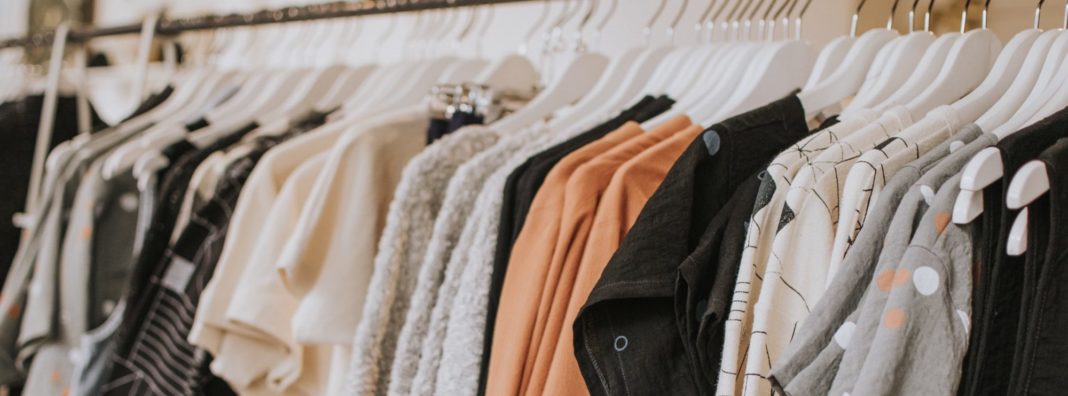
Numbers are in, and 2019 was another record-breaking year for Black Friday Weekend. Yet once again, the lines and fights that have come to characterize Black Friday were conspicuously missing. Why? It’s simple: online shopping is fundamentally changing the way we buy. More than half of all Thanksgiving weekend sales took place online. Unsurprisingly, it seems shoppers prefer to do their holiday shopping in their own homes, away from all the crowds and chaos. But Black Friday isn’t the only tradition online shopping is turning on its head.
Take, for instance, the very idea of owning stuff. As more rental services emerge, the trend toward renting rather than owning will likely continue. According to the Wall Street Journal, people only wear 20% of what is in their wardrobe regularly. The vast majority is worn only a couple of times.
Services like Rent the Runway and Gwynnie Bee were developed, in part, to help customers save money and time. These services allow you to rent multiple items for the cost of buying a single clothing item. They also help customers save time by providing accessible online platforms and apps where customers can scroll through the inventory.
Rent the Runway, for example, was created to lend formal party clothes to women who didn’t want to invest money in expensive dresses they would only wear once or twice. But the service has become so successful that they now also rent professional clothes and everyday outfits too. Rent the Runway has become so popular that even popular brands have started experimenting with rental services, including American Eagle, Urban Outfitters, Express, Loft, and Vince.
And the shift from buying to renting is happening well beyond the clothing industry. Ikea is testing out furniture rental for consumers who move often and don’t want to invest in purchasing and moving their furniture every time they move. Expeerent is a peer-to-peer rental platform offering equipment such as kayaks, climbing equipment, and mountain bikes. Toolsity allows you to find power tools available for rent in your neighborhood.
Renting has gained popularity for two main reasons: First, online rental stores help you save time. Most services have an app that allows you to scroll through items whenever you have some free time. Second, having the option to rent rather than buy provides for a diversity of options that shoppers didn’t have access to before. Think about it this way: today, you can have a whole new wardrobe every month without clogging your closets and drawers up with old, unworn clothing. As more and more of our everyday items become available for rent, we will most likely own less stuff.
But one new development in the world of clothing rentals is doing even more to change the way we shop. Peer-to-peer lending now allows regular people who already own clothes to rent them out to others. While most clothing rental services involve a store with a warehouse full of clothes, Wardrobe allows people to borrow clothes from each other. Using dry cleaners as exchange locations for items, the Wardrobe app enables you to find clothing items for rent in your neighborhood and rent them for a specific price. Could be this the rise of the fashion sharing economy? Most likely.
But even with peer-to-peer rentals, customers are still picking out the clothes they’d like to rent. That’s also about to change. The very act of shopping may soon become anachronistic. You’re not going to have to pick out your merchandise at all. AI will do that for you. This is already starting in some areas, particularly in subscription boxes.
Subscription boxes have been gaining popularity over the last few years. This mode of shopping involves paying a monthly subscription to a company that specializes in a niche market and delivers a box of goodies every month to your door. There are subscription boxes for anything you can think of, including beauty products, food, Japanese snacks, dog toys, teas, crafts, scotch whiskey, and carnivorous plants. In fact, the subscription box market grew by 890% from 2014 to 2018. This year, more than half of online shoppers were subscribed to a box service. This growth may be partly because subscription boxes have brought something new to the table: they are creating a personalized shopping experience for every consumer using AI and machine learning.
Source: Forbes
To understand how these boxes use AI, let’s take a look at one of the most successful models. Founded in 2011, Stitch Fix began as a monthly subscription box offering personal styling services for women’s clothing for a small fee. However, their stylists are not picking the clothes for each box on their own. They get help from AI and data scientists to predict what styles and clothing the consumer will like. Those predictions are informed by questionnaires that ask consumers about their size, preferences for patterns they like or dislike, and even their occupation. This data is collected and passed onto machine learning algorithms. When a box is requested, the AI ranks the inventory depending on whether it thinks the client will like the style. After a final list of items is created, a human stylist — who is also assigned by algorithms — reviews the items. Every time a new box is sent out, more data is collected from the products that have been returned, and a data feedback loop is established. This allows the AI to keep track of a client’s changing tastes, predict what they want to wear next, and send them personalized items.
Most subscription boxes are using some algorithm every time they send a box to a customer. This means that the one doing your shopping is not you or another human, but AI. As subscription boxes continue to grow and technology continues to evolve, we may soon have AI doing all of the shopping for us.
With physical stores closing down and malls dying, we can only assume that more and more people will opt into services that lead to a personalized and fun way to shop for clothes. As our shopping habits change, companies will have to find innovative ways to sell their products online. And more and more of these companies will use AI, machine learning, or apps to help make that happen. So as we say goodbye to our shopping trips, let’s welcome our own personalized AI shopping stylist for fashion advice.

